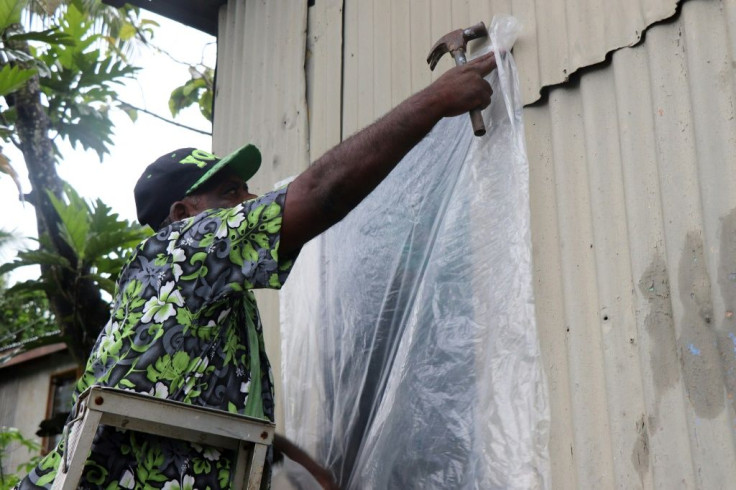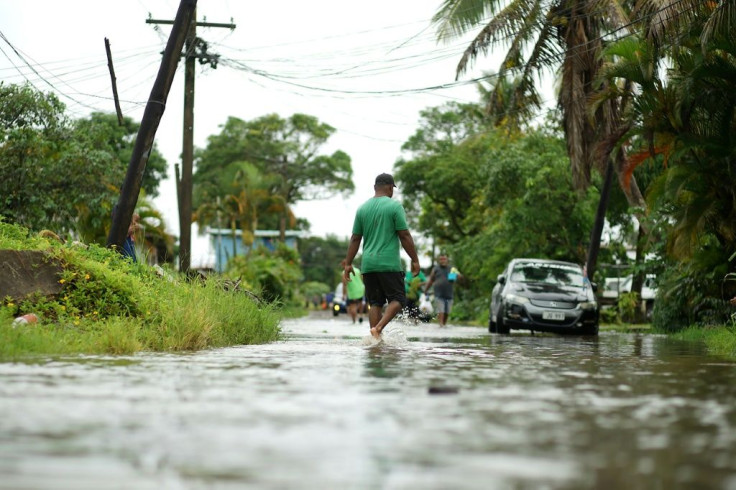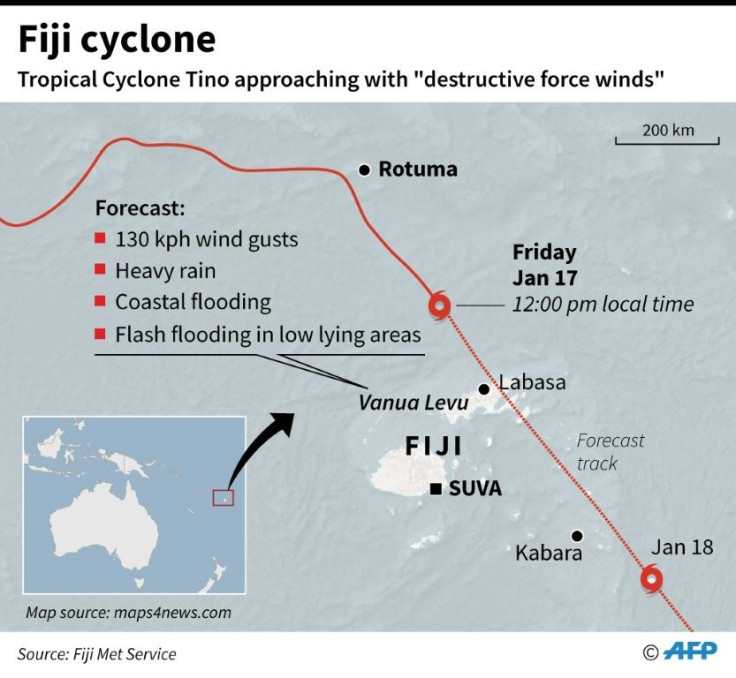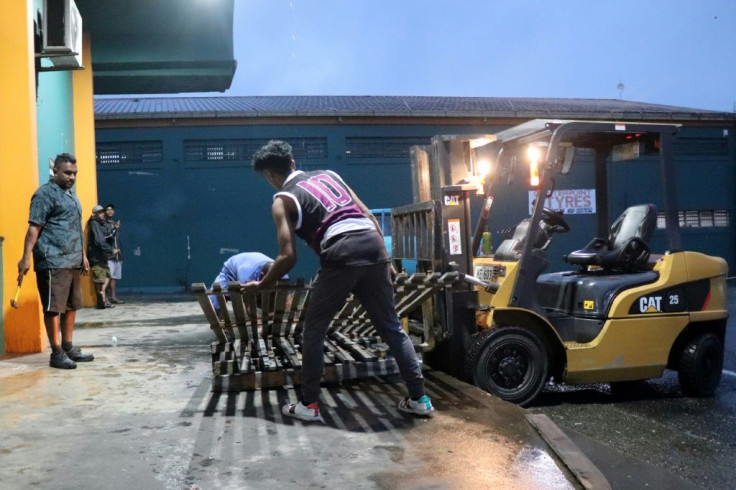Super Cyclone Hits Fiji Bringing Floods, Landslides
Super cyclone Yasa slammed into Fiji's second-largest island Thursday, tearing roofs off buildings as it triggered flash floods and landslides in the Pacific island nation.
After days of dire warnings about widespread destruction, Fiji's Met service said the top-of-the-scale Category Five storm made landfall on Vanua Levu late Thursday packing winds gusts of up to 345 kilometres an hour (210 miles an hour).
It said the cyclone, one of the most powerful ever recorded in the South Pacific, would be accompanied by monster waves exceeding 10 metres (33 feet).

Yasa, which is expected to move out to sea early Friday, landed in the sparsely populated Bau province.
There were no immediate reports of damage or casualties but social media posts showed flooded villages and corrugated sheeting blown off homes.
But Prime Minister Frank Bainimarama earlier warned the storm was so big that its impact was likely to be felt across the entire country.
He feared destruction from Yasa would be worse than a cyclone four years ago that killed dozens.

"Over 850,000 Fijians are in the direct path of the cyclone -- more than 95 percent of our population," he said.
"Everywhere in Fiji, we can expect the rains will get worse, the winds will become more destructive.
"In low-lying areas, we anticipate flash flooding and severe coastal inundation, including waves up to 10 metres (33 feet) in height."
He said Yasa "could easily surpass" the destruction wrought by Cyclone Winston in February 2016, which killed 44 people and destroyed tens of thousands of homes.

The Fijian leader, a long-time campaigner for climate action, blamed global warming for such super storms, which were once rare but have become relatively common.
"As the world is getting warmer, these storms are getting stronger," he said.
"Every one of us must treat these climate-fuelled catastrophes with deadly seriousness."

Fiji has opened evacuation centres and people living near the coast have been advised to flee to higher ground.
Housing in Fiji's villages is largely made from timber and corrugated iron, making them vulnerable to high winds.
Sheltering in schools, church halls and even shipping containers offers better protection but runs the risk of health issues if people stay longer than a few days.
All schools and public transport were closed, with non-essential public servants told to stay home and a curfew in place for Thursday night.
Authorities also declared a state of natural disaster for the next 30 days, which gives sweeping powers to emergency services.
"We don't want anybody losing their lives out there," assistant police commissioner Abdul Khan said.
"We will be here to protect you. Please take this seriously and let us prepare for a worst-case scenario."
New Zealand-based meteorological service Weatherwatch said Yasa was of capable of cutting a swathe of destruction 300 kilometres wide.
"This storm has the ability to swamp entire islands, inundate entire coastal communities, wipe some small islands off the map entirely," Weatherwatch managing director Philip Duncan said.
Save the Children said lessons had been learned from Winston in 2016 and Fijians were taking cyclone preparation seriously.
"We've seen people stocking up on essential food items and supplies," the aid agency's Fiji chief Shairana Ali said.
"People are stocking up on water because there is a warning from the Fiji Water Authority that people will not have proper water supply for at least 10 days."
Fiji's borders remain closed due to the coronavirus pandemic, which Ali said could present a challenge for international relief efforts.
Aid agencies have pre-positioned supplies across the country in anticipation of a major disaster during cyclone season, which runs until May next year.
The most recent Category Five storm to hit Fiji was Cyclone Harold, which killed 31 people as it tore through the Solomon Islands, Vanuatu, Fiji and Tonga in April this year.
© Copyright AFP 2024. All rights reserved.




















